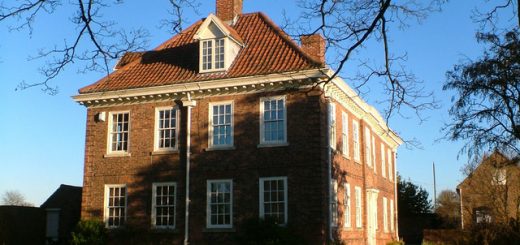Piper’s Hollow, Sandbach
On 3 September 1651 the final battle of the English Civil War was fought, the Battle of Worcester. Oliver Cromwell’s Parliamentarian New Model Army had a recorded strength of around 28,000 and they defeated the 16,000 strong Royalist Army, many of whom were Scottish. On 4 September, following the battle, a contingent of around 1000 Royalist Scottish soldiers were ambushed by the people of Sandbach while they rested near the town. One account I discovered states that the skirmish lasted a few hours and the casualty list was relatively low, with just a few towns people dying and under a dozen Scots. Roughly 100 were taken prisoners were taken and held in the local parish church. Other accounts like in the newspaper article quoted below suggest a much higher death toll.
The Scots that died were said to be buried in Piper’s Hollow, which could be named after a Scottish piper who was mistakenly thought to be dead and subsequently revived when he was brought to the burial site. He apparently recovered enough to play a requiem on his pipes for his lost comrades.
Another candidate for the burial site is Scotch Meadow between Malkins Top and Hill Bank.
There is a story regarding the haunting of Piper’s Hollow and the following version entitled ‘Tragic ghost of haunted Hollow’ was published in the Shields Gazette on Tuesday 16 February 2010.
THEY say old soldiers never die, but merely fade away.
Ghosts of soldiers are ‘dead’ already, but, like their living comrades it seems, they can hang around this earthly realm for an awful long time.
In South Cheshire there is an area called Piper’s Hollow, which sounds innocent enough, except that the land contains the remains of hundreds of Scottish soldiers.
These fallen warriors were massacred by the townsfolk of Sandbach after the infamous Battle of Worcester in 1651.
The tale is a tragic one. The Scots’ troops were tired and hungry.
On the long march home they stopped at a field near to what is now known as Piper’s Hollow to rest, unaware that the local populace was aware of their approach and ready for them.
At a pre-arranged signal, they descended upon the Scots with pikes, cudgels and axes, massacring every single one of them.
Even their horses were mutilated and killed.
Finally, the bodies of the dead were taken in carts to Piper’s Hollow itself for a crude burial.
On the first anniversary of the tragedy, the strains of a doleful lament were heard echoing around the depression.
It was, the locals believed, the eerie echo of a lone piper paying tribute to his fallen comrades.
Every year after that the sound would be heard, eventually leading to the place being renamed Piper’s Hollow.
On many occasions witnesses even claimed to have seen the piper walking along to a military step while playing the pipes.
The piper was seen in 1969 by two walkers – again on the anniversary of the massacre – but I haven’t been able to substantiate any more recent sightings.
If there have been any, I’d like to know about them.
There is something intensely sad about this story, and if ever there was a ghost tale that I wanted to believe in, then this is it.
In the 1960s, Piper’s Hollow was filled in with thousands of tons of earth.
Somehow I doubt that changing the landscape will remove the ever-faithful presence of a spectral soldier standing watch over his fallen comrades.



Recent Comments